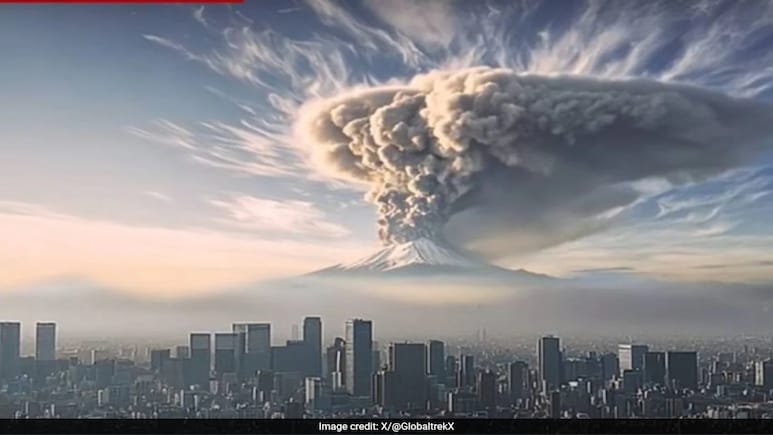
- Japanese government released AI video simulating a Mount Fuji eruption and its effects
- Volcanic ash could reach Tokyo within 1-2 hours, accumulating up to 30 cm in some areas
- Ashfall would disrupt trains, planes, powerlines, phone, internet, and reduce driving safety
The Japanese government recently released a video created by artificial intelligence (AI) to illustrate what would happen if Mount Fuji were to erupt. "The moment may arrive without any warning," the video narrator said.
Watch the video here:
🌋 Tokyo releases AI-generated video of Mount Fuji erupting..
— Global𝕏 (@GlobaltrekX) August 26, 2025
It is all part of an artificial intelligence-generated video the Tokyo Metropolitan Government released last week to raise awareness of what could happen to the capital if Mount Fuji erupted. 🌋 pic.twitter.com/PFKKT2Rcu4
Also Read | Canadian Man Goes Viral After Spotting Big Differences In UK Vs Canada Grocery Stores
The video released by the Tokyo Metropolitan Government is to raise awareness and highlight the need for preventive measures. Notably, Mount Fuji is not going to erupt any time soon.
The video states that the volcanic ash would start falling in heavily populated Tokyo within 1-2 hours after an eruption, with 2-10 cm of ash expected to accumulate, and the western part of the capital city could see up to 30 cm of ash.
According to the video, ash on train tracks and runways would halt trains and planes. Driving vehicles would become dangerous due to reduced visibility and slippery roads. Powerlines would be disrupted because of the wet ash, leading to widespread power outages. Phone and internet services would also be disrupted.
Also Read | "I Feel Humiliated": Company Publicly Shames, Fines Employee For Leaving AC On
Volcanic ash could cause health issues. People might suffer from irritation and breathing problems, especially people with pre-existing conditions like asthma.
Stores would quickly run out of food and supplies, and officials might advise people to stock up on essentials for at least three days.
Evacuation is recommended only if ash accumulates beyond 30 cm, especially near wooden buildings at risk of collapse.
Some experts, like Professor Kimiro Meguro, have called the simulation "alarmist," noting that it depicts a worst-case scenario with special conditions.
"The simulation that is being shown would only ever happen under special conditions and this is not a high-probability event," Meguro, a professor of disaster mitigation engineering at the University of Tokyo, told This Week in Asia.
"It shows a worst-case scenario that is built on the assumption of what would happen in the event of an eruption of Mount Fuji."
"Maybe the person in charge of disaster management for volcanoes was worried that they would be accused of not providing the public with enough warnings or information," he said.
Track Latest News Live on NDTV.com and get news updates from India and around the world

